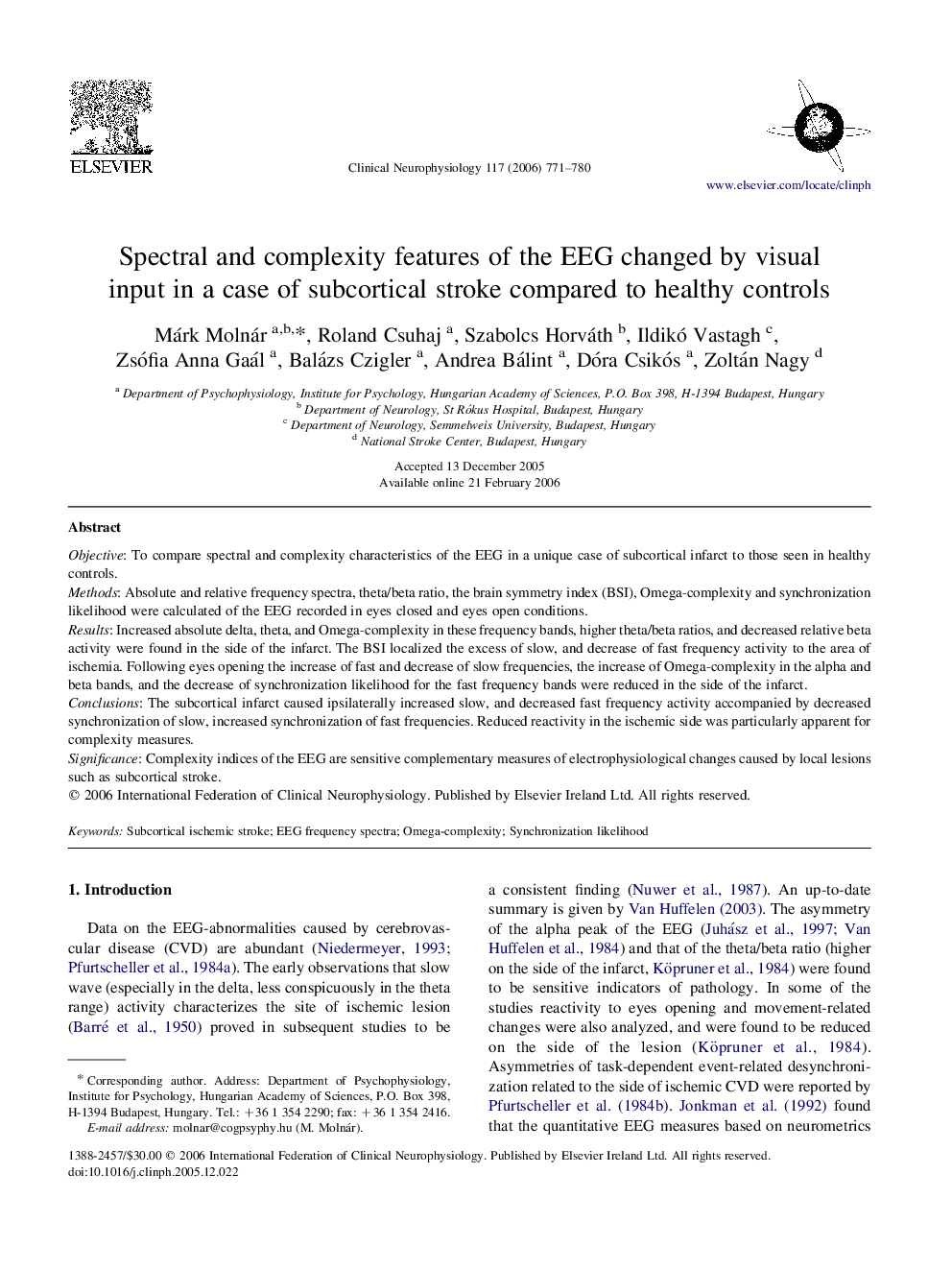| Article ID | Journal | Published Year | Pages | File Type |
|---|---|---|---|---|
| 3048233 | Clinical Neurophysiology | 2006 | 10 Pages |
ObjectiveTo compare spectral and complexity characteristics of the EEG in a unique case of subcortical infarct to those seen in healthy controls.MethodsAbsolute and relative frequency spectra, theta/beta ratio, the brain symmetry index (BSI), Omega-complexity and synchronization likelihood were calculated of the EEG recorded in eyes closed and eyes open conditions.ResultsIncreased absolute delta, theta, and Omega-complexity in these frequency bands, higher theta/beta ratios, and decreased relative beta activity were found in the side of the infarct. The BSI localized the excess of slow, and decrease of fast frequency activity to the area of ischemia. Following eyes opening the increase of fast and decrease of slow frequencies, the increase of Omega-complexity in the alpha and beta bands, and the decrease of synchronization likelihood for the fast frequency bands were reduced in the side of the infarct.ConclusionsThe subcortical infarct caused ipsilaterally increased slow, and decreased fast frequency activity accompanied by decreased synchronization of slow, increased synchronization of fast frequencies. Reduced reactivity in the ischemic side was particularly apparent for complexity measures.SignificanceComplexity indices of the EEG are sensitive complementary measures of electrophysiological changes caused by local lesions such as subcortical stroke.
